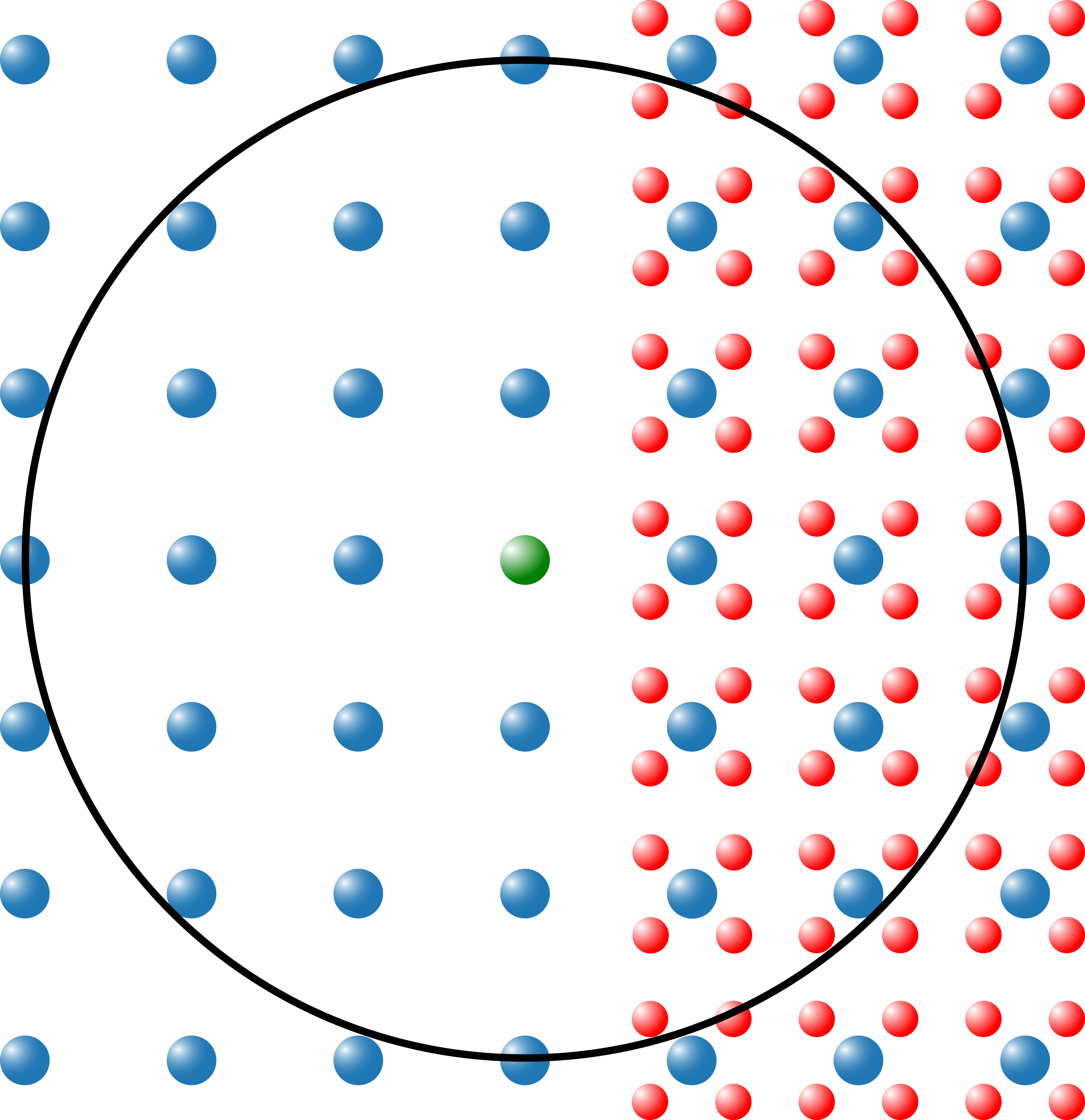Background
Due to different local flow conditions in technical applications, locally varying resolutions are necessary for a numerically efficient solution. In this way, many realistic geometries become accessible to a numerical description in the first place. Since the spatial and temporal need for higher resolution can also change, it also makes sense to adapt refinement zones instantaneously. If the position of the refinement zones can be adapted to the varying resolution requirement, this is referred to as adaptive refinement.

So far, the turboSPH research code has only mapped parts of an atomizer nozzle with the required resolution, as can be seen in the following video. For this purpose, a 30° sector was arranged several times side by side. With the help of locally adaptive resolution, it should be possible to simulate complete geometries.
Challenges
In contrast to grid-based CFD codes, local refinement in particle methods such as SPH is not state of the art. Since moving particles serve as support points for the approximations, constant conditions cannot be determined a priori due to the Lagrangian character of the fluid elements at the transitions of the refinement zones. Nevertheless, interactions between zones of different refinement must be guaranteed. This represents the greatest challenge with variable resolutions in particle methods.
Objectives in the research area of adaptivity in SPH
- Implementation of a method that is most suitable with regard to the physical phenomena typical of the application, but also with regard to the numerical effort involved.
- Selection of suitable criteria for adaptive refinement
- Application of the method to technically relevant geometries in the field of atomization


